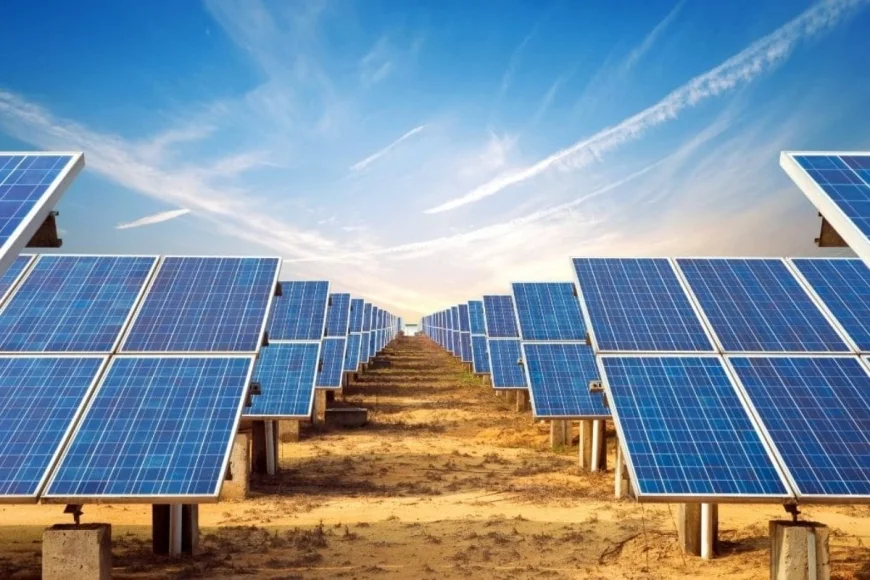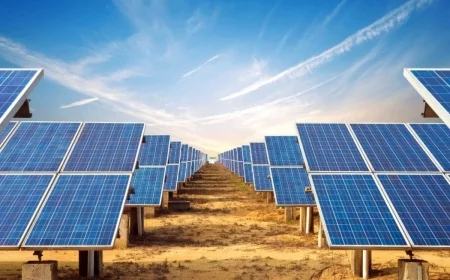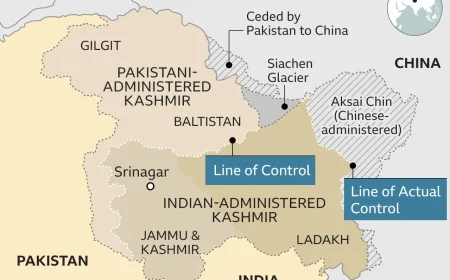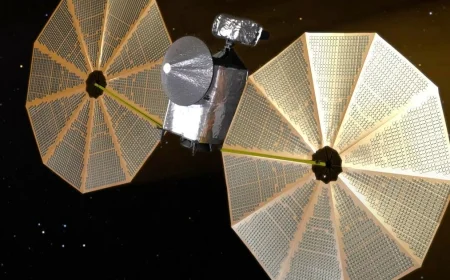The rapid decline in solar power costs represents one of the most significant energy transitions in modern history. While this democratisation of energy production offers numerous benefits for climate goals and energy independence, it simultaneously threatens the traditional utility business model and grid stability. This analysis examines the emerging “death spiral” phenomenon affecting electrical grids and proposes balanced policy approaches that acknowledge both the transformative potential of distributed solar power and the legitimate concerns about grid reliability and equitable cost distribution.
The Emerging Grid Crisis
The traditional electricity model relied on centralised generation with predictable cost recovery through regulated rates. However, as solar panel costs have plummeted—falling by over 90% since 2010—consumers increasingly generate their own electricity, reducing revenue for utilities whilst grid maintenance costs remain constant or increase. This creates what energy economists term a “death spiral”: as consumers with means install solar panels, utilities must raise rates on remaining customers to cover fixed costs, incentivising more customers to adopt solar, and further exacerbating the problem.
In regions with high solar penetration such as California, Hawaii, and Australia, this phenomenon has accelerated rapidly. When Australia’s rooftop solar capacity grew by nearly 3GW in 2020 alone, midday electricity prices occasionally turned negative, reflecting a fundamental mismatch between supply and demand patterns. The grid, designed for centralised, dispatchable generation, struggles to accommodate the intermittent nature of distributed solar resources.
Equity Concerns
The current transition raises significant equity questions. Early solar adopters tend to be wealthier homeowners who can afford installation costs, while renters, apartment dwellers, and lower-income households often cannot participate. As utilities raise rates to compensate for lost revenue, these non-adopters bear a disproportionate share of grid maintenance costs. In effect, this creates a regressive cross-subsidy from lower-income to higher-income households.
A study from the University of California found that in some regions, non-solar customers pay up to 20% more for their electricity due to cost-shifting mechanisms. This threatens to undermine public support for renewable energy transitions if perceived as primarily benefiting the affluent at the expense of vulnerable populations.
Technical Challenges
Beyond financial considerations, high solar penetration creates technical challenges for grid operators:
1. Duck Curve Phenomenon: As solar generation peaks midday but demand peaks in evening hours, conventional power plants must rapidly ramp up production when solar output declines, creating operational strain.
2. Voltage Regulation: Distributed generation can cause voltage fluctuations on distribution networks not designed for bi-directional power flows.
3. Grid Inertia: Traditional rotating generators provide system inertia that helps maintain frequency stability; inverter-based solar resources typically do not provide this service.
4. System Protection: Existing protection schemes may not function properly with high penetrations of distributed resources, potentially compromising safety.
These technical challenges require significant investment in grid modernisation at precisely the moment when utilities face financial pressure from declining revenues.
International Case Studies
Australia: Market Disruption and Adaptation
Australia represents perhaps the most advanced case of solar-driven grid disruption. With over 30% of households now equipped with rooftop solar in some states, the country has experienced both benefits and challenges. The Australian Energy Market Operator has implemented innovative approaches, including:
• Development of virtual power plants that aggregate residential solar and storage
• Implementation of dynamic export limits for solar systems
• Investment in community battery projects to increase solar utilisation
Germany: Orderly Transition Through Policy Design
Germany’s Energiewende (energy transition) included foresight in grid planning. Key elements included:
• Early implementation of time-varying feed-in tariffs that declined predictably over time
• Grid connection codes that required smart inverters capable of providing grid services
• Significant investment in transmission infrastructure to transport renewable energy from resource-rich regions to load centres
Hawaii: From Crisis to Innovation
Hawaii experienced severe grid challenges when solar adoption outpaced regulatory frameworks. Subsequently, the state has pioneered:
• Advanced inverter requirements that enable solar systems to support grid stability
• Time-of-use rates that better align consumption with solar production
• Integrated grid planning that incorporates distributed energy resources as core assets
Balanced Policy Solutions
Addressing the solar-driven grid challenges requires nuanced policies that support continued renewable growth whilst ensuring system reliability and fairness. Options include:
1. Rate Structure Reform
Traditional volumetric rates (charging primarily by kWh consumed) inadequately reflect the fixed costs of grid infrastructure. More sophisticated approaches include:
• Introducing capacity-based charges that reflect each customer’s impact on system peaks
• Implementing time-of-use rates that better signal the varying value of electricity
• Creating grid access charges that ensure all users contribute fairly to infrastructure costs
However, reforms must be carefully designed to avoid unduly penalising vulnerable consumers or undermining clean energy economics.
2. Modernised Regulatory Frameworks
Utility business models can evolve beyond the traditional volume-based paradigm:
• Performance-based regulation that rewards utilities for achieving policy goals rather than capital investment
• Distribution system operator models that position utilities as platform providers
• Mechanisms that allow utilities to earn returns on services rather than solely on assets
3. Technical Solutions
Grid infrastructure requires investment in technologies that increase flexibility:
• Advanced inverters that provide voltage support and other grid services
• Energy storage at multiple scales, from household batteries to utility-scale systems
• Enhanced forecasting and control systems for distributed energy resources
• Strategic transmission investments to balance renewable resources across wider geographic areas
4. Equity-Focused Programmes
Ensuring that the benefits of the clean energy transition are widely shared:
• Community solar programmes that allow participation without requiring property ownership
• Low-income solar incentives and financing mechanisms
• Workforce development initiatives focused on disadvantaged communities
• Protection mechanisms for vulnerable consumers who cannot participate in self-generation
Strategic Implementation Recommendations
To navigate the solar-driven grid transformation successfully, policymakers should consider these strategic steps:
1. Develop Long-Term Integrated Planning: Rather than reactive measures, comprehensive planning should anticipate high renewable penetration and design systems accordingly.
2. Pursue Gradual, Transparent Reforms: Abrupt changes to compensation schemes or rate structures can undermine investor confidence and public support. Scheduled, predictable adjustments provide time for adaptation.
3. Balance Stakeholder Interests: Create processes that meaningfully engage all affected parties—utilities, solar advocates, consumer representatives, and environmental justice organisations.
4. Prioritise Data-Driven Decisions: Collect and analyse granular data on system operations, costs, and distributional impacts to inform evidence-based policies.
5. Invest in Research and Demonstration: Support innovation in grid-edge technologies, market designs, and business models through strategic R&D funding and regulatory sandboxes.
6. Coordinate Across Policy Domains: Align energy, climate, housing, and social welfare policies to ensure coherent outcomes that advance multiple objectives.
Conclusion
The solar-driven transformation of electrical systems represents both an extraordinary opportunity and a profound challenge. The emerging “death spiral” is not inevitable but requires thoughtful intervention that respects both physical realities and social considerations. By approaching these issues with nuance rather than ideology, policymakers can harness the benefits of cheap solar power whilst maintaining reliable, equitable energy systems.
Success will require reimagining century-old regulatory paradigms and infrastructure designs. Countries that master this transition will not only achieve climate goals but also create more resilient, democratic energy systems that serve as models for global emulation. Those that fail to adapt risk grid instability, public backlash, and ultimately slower progress toward decarbonisation.
Published by The Institute for Global Progress
May 2025

 Like
0
Like
0
 Dislike
0
Dislike
0
 Love
0
Love
0
 Funny
0
Funny
0
 Angry
0
Angry
0
 Sad
0
Sad
0
 Wow
0
Wow
0


























































